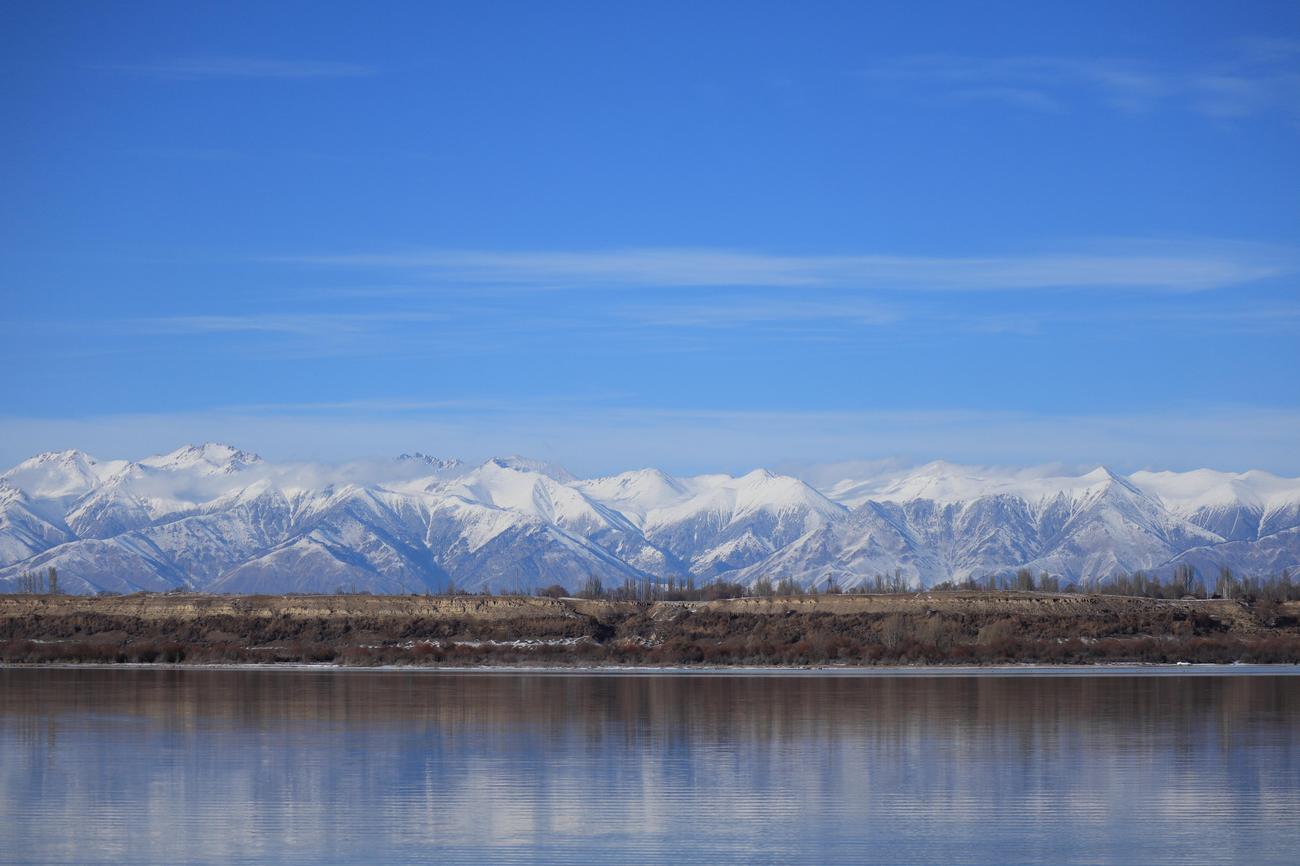Welcome to an in-depth analysis of the population of Kyrgyzstan, where we delve into the trends and factors that influence its growth. In this article, titled “Kyrgyzstan Population: Analyzing Trends and Factors Influencing Growth,” we will explore the demographic landscape of this fascinating country, examining the statistical methodologies and research needed to gain a comprehensive understanding. By uncovering the patterns and influences that shape Kyrgyzstan’s population dynamics, we aim to provide accurate and insightful analysis, shedding light on the key factors impacting its growth and distribution.

What is the Population of Kyrgyzstan?
Kyrgyzstan, a landlocked country in Central Asia, boasts a population of approximately 6.2 million people. This figure is estimated to grow further, reaching 6,735,347 by the year 2023. Situated within an area of 77,182 square miles (199,900 square kilometers), Kyrgyzstan encompasses diverse ethnicities, cultural traditions, and geographical landscapes. To truly understand Kyrgyzstan’s demographic landscape, we need to delve into the intricacies of its population trends, patterns, and various factors that influence its growth and distribution.
Understanding the Urban-Rural Divide in Kyrgyzstan
Kyrgyzstan is a country with a significant urban-rural divide. While approximately one-third of its population resides in urban areas, the majority still lives in rural regions. This divide plays a crucial role in shaping the socio-economic fabric of the nation. Urban areas, such as the capital city of Bishkek, are hubs of commerce, industry, and connectivity. On the other hand, rural areas embody the traditional lifestyle, reflecting a deep connection to the land and pastoral practices that have been passed down through generations.
Key Point:
The urban-rural divide in Kyrgyzstan significantly influences the socioeconomic dynamics of the country.
The Ethnic Diversity of Kyrgyzstan
The population of Kyrgyzstan comprises diverse ethnic groups, each contributing to the vibrant tapestry of the nation’s identity. The largest ethnic group in Kyrgyzstan is the Kyrgyz people, who account for 72% of the population. Other prominent ethnicities include Uzbeks, Russians, and Tajiks, along with smaller communities of Kazakhs and Ukrainians. This rich ethnic diversity fosters a multicultural society, allowing for a mosaic of traditions, languages, and perspectives to flourish.
Key Point:
Kyrgyzstan’s diverse ethnic makeup adds depth and richness to the social fabric of the nation.
Factors Influencing Population Growth
Various factors contribute to the growth and distribution of Kyrgyzstan’s population. Economic opportunities, political stability, and social infrastructure play pivotal roles in shaping migration patterns within the country. While urban areas often attract individuals seeking better job prospects and access to amenities, rural areas maintain their appeal through strong cultural and familial ties, along with a closer connection to nature.
Key Point:
Economic opportunities, political stability, and social infrastructure are key factors that influence population growth and distribution in Kyrgyzstan.
Religion and Culture
Islam is the predominant religion in Kyrgyzstan, with a majority of the population practicing this faith. However, the country also celebrates religious diversity, and communities with Christian, Buddhist, and other religious affiliations coexist harmoniously. This cultural amalgamation contributes to a unique blend of traditions, festivals, and celebrations, embodying the spirit of unity amidst religious diversity.
Key Point:
The coexistence of different religious practices in Kyrgyzstan highlights the tolerant and inclusive nature of the country.
As we explore the population dynamics of Kyrgyzstan, we gain valuable insights into a nation shaped by its diverse ethnic makeup, the urban-rural divide, socio-economic factors, and religious and cultural traditions. By comprehending the complex interplay of these elements, we gain a deeper appreciation for the incredible diversity and resilience of the people who call Kyrgyzstan home.
Key Point:
Kyrgyzstan’s population embodies a mosaic of cultural traditions, religious practices, and socio-economic dynamics, making it a fascinating and diverse nation.
One of the most captivating destinations in Central Asia is Kyrgyzstan, a country known for its stunning natural beauty and rich cultural heritage. If you’re a travel enthusiast seeking out interesting facts about Kyrgyzstan, look no further. We have compiled a comprehensive list of intriguing tidbits that will inspire your wanderlust and ignite your curiosity. Discover the unique traditions, breathtaking landscapes, and fascinating history that make Kyrgyzstan a hidden gem. So why wait? Click here to explore the secrets of this enchanting country: interesting facts about Kyrgyzstan.
Kyrgyzstan: A Closer Look at Basic Information
[youtube v=”suqUxziLfew”]
Kyrgyzstan, officially known as the Kyrgyz Republic, is a country located in Asia. With a population of approximately 5.849 million people as of 2018, Kyrgyzstan spans an area of 199,951 square kilometers. Bishkek, the capital city, serves as the political and administrative center.
One important characteristic of Kyrgyzstan is the significant urban-rural divide. While about one-third of the population resides in urban areas, the majority of people live in rural regions. This divide plays a crucial role in shaping the country’s social and economic landscape.
The population of Kyrgyzstan is diverse, with the Kyrgyz people making up the largest ethnic group, constituting 72% of the population. Other notable ethnicities include Uzbeks, Russians, and Tajiks, among others. This diversity contributes to the unique and resilient nature of the country’s population.
Various factors influence population growth and distribution in Kyrgyzstan. Economic opportunities, political stability, and social infrastructure play key roles in these dynamics. As the country continues to develop, these factors will continue to shape its population landscape.
In terms of religion, Islam is the predominant faith followed by the majority of the population. However, Kyrgyzstan celebrates religious diversity, with communities practicing Christianity, Buddhism, and other religions. This religious pluralism adds to the cultural richness and tolerance within the country.
Kyrgyzstan boasts several national symbols, such as the national flag, emblem, and anthem. The national bird is the Turkestan grand jay peregrine falcon, while the tulip serves as the national flower. The country’s national fruit is the blackberry, and the Siberian fir stands as the national tree. The snow leopard holds the esteemed title of the national animal. Interestingly, the national sport is a unique one called “dead goat polo.”
In closing, the diverse ethnic makeup, the urban-rural divide, socio-economic factors, and religious and cultural traditions all contribute to the exceptional characteristics of Kyrgyzstan’s population. As the country continues to grow and develop, its people remain resilient and continue to shape the nation’s future.
“Kyrgyzstan’s population is a vibrant tapestry of diversity, dictated by its urban-rural dynamics, religious pluralism, and cultural traditions.”

FAQ
Question 1
What is the current population of Kyrgyzstan?
Answer 1
The current population of Kyrgyzstan is estimated to be 6.2 million.
Question 2
What is the projected population of Kyrgyzstan in 2023?
Answer 2
The population of Kyrgyzstan is projected to be 6,735,347 in 2023.
Question 3
What is the capital city of Kyrgyzstan?
Answer 3
The capital city of Kyrgyzstan is Bishkek.
Question 4
Which is the second-largest city in Kyrgyzstan?
Answer 4
The second-largest city in Kyrgyzstan is Osh, with an estimated population of 246,000.
Question 5
What is the largest ethnic group in Kyrgyzstan?
Answer 5
The largest ethnic group in Kyrgyzstan is the Kyrgyz, who account for 72% of the population.














